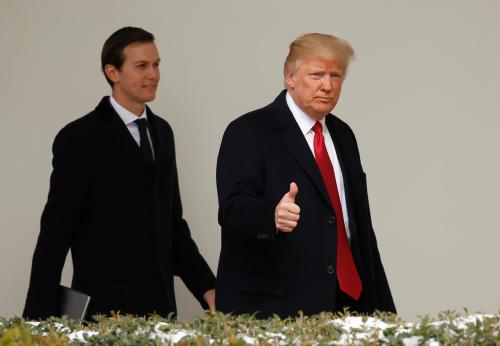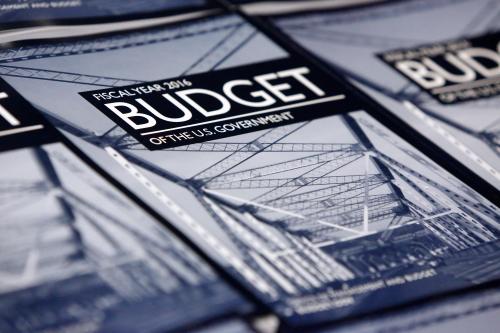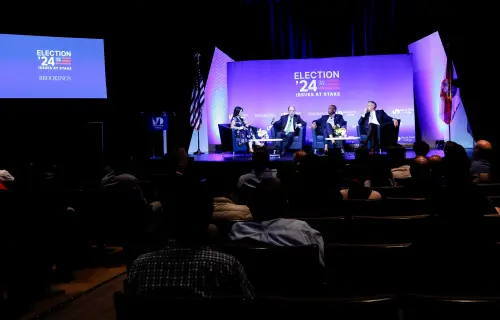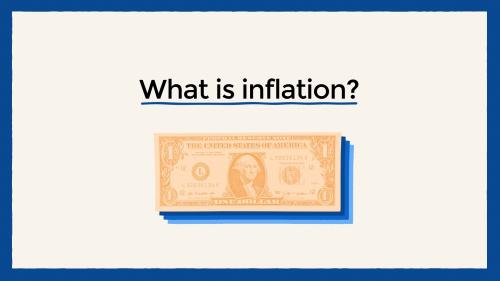Following the announcement of a sweeping budget blueprint from President Donald Trump in March, his budget outline is now making its way to Congress. Though unlikely to remain fully intact, if enacted this budget would have a major impact on the services available to virtually every American citizen. According to Brookings experts, here’s what you should know about the Trump’s proposal:
1. This is not the final federal government budget
Federal budget legislation originates in Congress, not in the White House. Before a budget is approved, it must pass through committees in both the House and the Senate and then be voted on by the whole Congress. Thus, the White House’s budget is almost like a suggestion. When budgeting legislation does begin in Congress, whether or not the majority Republicans use Trump’s budget proposal as a starting point, congressional Democrats are likely to use all the legislative tools at their disposal to achieve their own priorities. Sarah Binder explores the filibuster, the “nuclear option,” and other options available to the minority party.
2. This budget proposal is not complete
President Trump’s submission does not contain all the details that are usually associated with a full presidential budget submission. That is why it is referred to as a “skinny budget,” Molly Reynolds explains.
Trump’s proposal only addresses discretionary spending, which includes defense, education, and scientific research funding which amounts to 32 percent of all federal spending. It does not include mandatory or entitlement spending, so there is no mention of Medicare, Medicaid, interest payments on the federal debt, student loans, and farm price supports. The budget proposal also does not include revenue proposals, so there is no mention of taxes.
Even for the Department of Defense, which is one of the only programs receiving an increase in funding and which represents about half of discretionary spending, there are not many details. The proposal does not contain information on exactly which programs and accounts would benefit.
3. The proposed budget could upset members of Trump’s voter base
Alice Rivlin explains that Trump’s budget proposal is “unlikely to be popular, even in his own party.” She highlights how the proposed budget outline will likely be unpopular, will negatively affect the populations that voted for Trump, and do nothing to decrease the accumulating federal debt.
Mark Muro points out the “disturbing disconnect” in President Trump’s expressed concern for the regions left behind and his budget outline. Muro is especially concerned with Trump’s treatment of three small but important agencies: the Manufacturing Extension Partnership, the Economic Development Administration, and the Appalachian Regional Commission.
According to David Wessel, this budget proposal may “please the small-government wing of congressional Republicans and their most ideologically committed supporters, but it may not play so well with ordinary Trump voters when they see rural airports close, or get turned away from federal job training programs, or lose federal aid for paying heating bills, or see delays in cleaning up contaminated land in their communities.”
4. The budget outline proposes a significant funding increase for the Department of Defense
Trump’s budget outline proposes a $54 billion increase in military spending. Michael O’Hanlon explains that this increase is only $20 billion more than Obama projected and a modest 4 percent increase in the Pentagon’s budget. O’Hanlon also discusses how this budget increase may not cover the costs of the structural expansions Trump has planned for the different branches of the military.
5. The proposed budget could prevent disadvantaged youth from having access to Sesame Street
Trump’s skinny budget proposes to cut funding to the Corporation for Public Broadcasting (CPB), which disseminates the educational kid’s show, Sesame Street. The federal government provides about $450 million a year to the CPB. That is 0.012 percent of the federal budget and $1.43 per person in the U.S. Research shows that the introduction of Sesame Street delivered remarkable benefits in terms of improvements in school readiness for children from disadvantaged communities at very little cost.
Research by Melissa Kearney and Philip Levine on the introduction of the Sesame Street program in the late 1960s finds that children who lived in areas with access to the Sesame Street broadcast were about 15 percent less likely to fall behind when they got to school than their counterparts who did not have broadcast access.
6. Cities cannot afford to pick up the tab for the program cuts proposed in this budget
State and local governments’ budgets are stretched thin due to rising Medicaid spending, pension obligations, debt repayments, and other costs. Amy Liu and Nathan Arnosti explain that state and local governments cannot afford to take up the costs of cut programs, including the Low Income Home Energy Assistance Program, Manufacturing Extension Partnership, and the Small Business Administration’s Regional Innovation Clusters.
Due to limited local budgets and the uneven distribution of private capital, the federal budget cuts will either be passed on to taxpayers in the form of higher state and local taxes, or vulnerable populations will be left without shelter, food, or other critical services.
7. The foreign aid cuts outlined in this budget could harm the U.S. economy and national security
Donald Trump’s budget has proposed a 37 percent cut to the United States international affairs budget, which would be between $20.7 billion and $21.8 billion. That would decrease the United States’ ability to provide health assistance, diplomatic and consular services, humanitarian assistance, development assistance, and fund the United Nations. George Ingram explores how these services protect American economic interests and help maintain our national security.
8. The budget should prioritize infrastructure
Despite Trump’s regular calls for infrastructure investment during the campaign, his budget proposal doesn’t prioritize it. Adie Tomer explains how increased driving, heavier traffic in trade corridors, and strained water infrastructure create an immediate need for infrastructure investment. Municipal water agencies alone need about $600 billion dollars in investment.
—
As President Trump gears up to defend his budget proposal to Congress, view an interactive timeline of the “fiscal fights” President Obama waged with Congress over the budget during his eight year term.









Commentary
8 things you should know about President Trump’s budget proposal
April 3, 2017